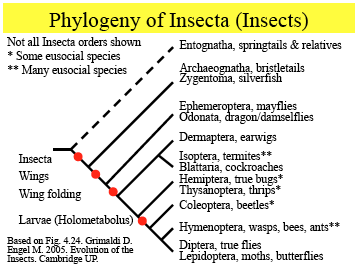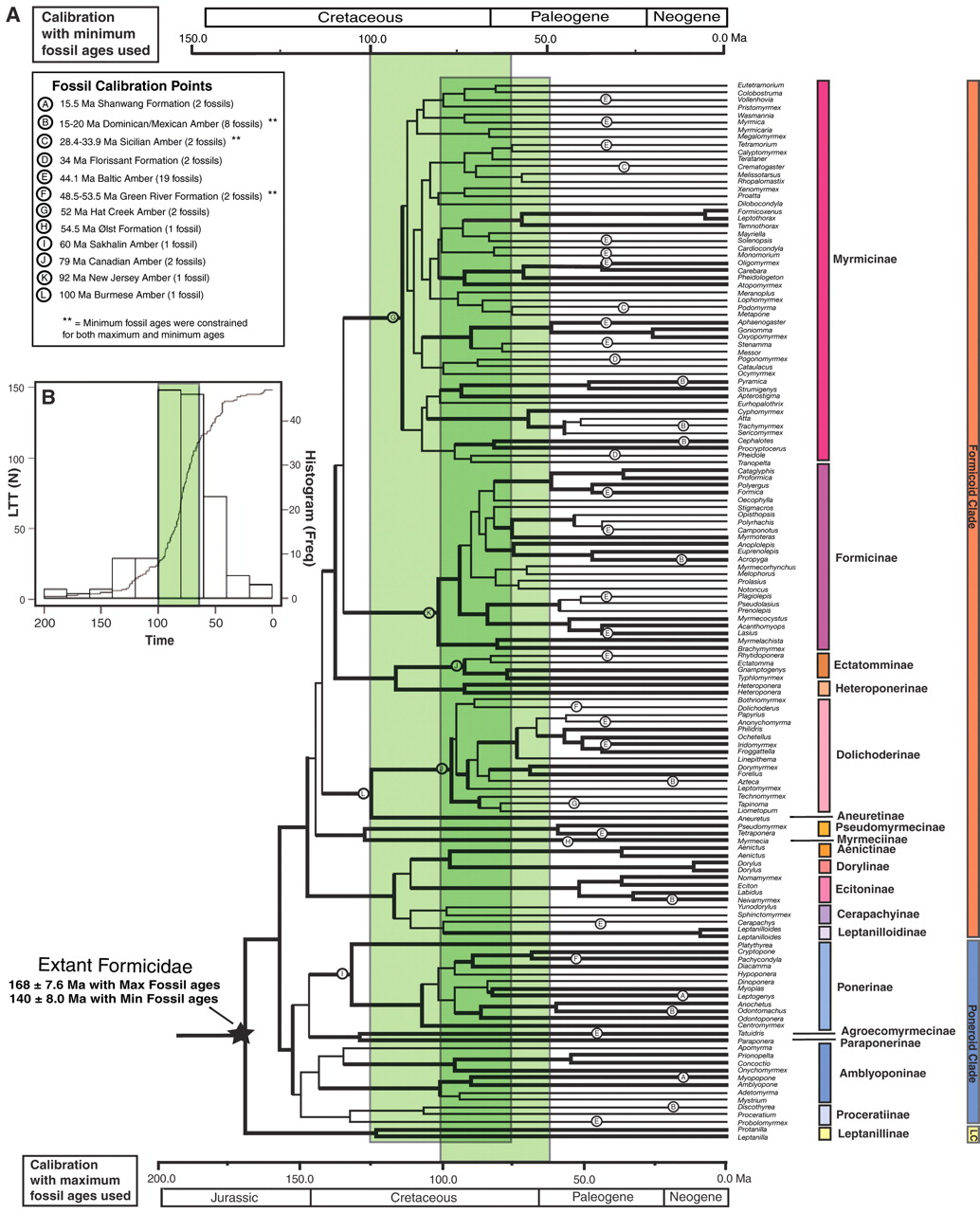Eusocial & Colony Behavior in Ants
Biology 342 Fall 2012
Celina Ortiz & Jason Swinderman
Phylogeny
Phylogeny describes the evolutionary history and development of a species. The ants we know today evolved from their wasp-like ancestors around the mid-Cretaceous period between 110 and 130 million years ago. That's about the same time flowering plants began to pop up! But when did their eusocial behavior first begin to arise? There is still much debate in the scientific community, but we have evidence that suggests eusocial behavior arose, at least in part, from pressures exerted by Hamilton's rule.
Primitive species of ant shows evidence for development of eusociality

N. macrops, also known as the "dinosaur ant", is a ‘primitive’ species of ant that has been used to study the origin of eusocial colony organization. All ants, including N. macrops, form eusocial colonies. However as a ‘primitive’ species N. macrops allows researchers to approximate the evolutionary origin of ants.
Microsatellites were used to measure the rates of multiple mating in queens. In both N. macrops and ‘modern’ ants, queens exhibit facultative polyandry. Queens most often mate with a single male (65%) however multiple mating occurs, possibly to increase colony resistance to disease. Nonetheless, N. macrops nest mate workers to shared 61% (Hamilton’s r) of their genes, which significantly surpassed the threshold value that would be needed for Hamilton’s law to apply. The evidence of the applicability of Hamilton’s rule and polyandry in N. macrops, a species that has maintained many ancestral traits, suggests roles of the two factors in development of eusocial systems. Further, the absence of a high degree of social interaction and colony integrity might indicate these as results of eusocial behavior developed as a result of pressures described by Hamilton’s rule.
Eusocial behavior has developed in a couple of species of insects (ants, bees, termites). Below is the phylogenetic tree of the Class Insecta, which shows where eusociality developed in insects and where it did not. Eusocial insects have a star (*) beside their name. Ants belong to the Order Hymenoptera.

Below is a phylogeny of the Family Formicidae, which ants belong to. As you can see, ants have been around for a very long time! There are also a LOT of ant species out there. Click the image to enlarge.
It's no wonder ants are estimated to be 15-25% of the animal biomass in certain areas of the world!
Evolution of colony behavior in other species
Many insects from the Hymenoptera order like termites, ants, and bees form eusocial colonies. This behavior is not exclusive to eusocial insects, though, as a variety of species outside the Hymenoptera order live in non-eusocial colonies. Only a couple of species outside of the Hymenoptera order form exclusively eusocial colonies, one of these being the Naked Mole Rat, a species of rodents native to Africa.
Naked Mole Rats (H. glaber)
Naked Mole Rats are one of the only two eusocial mammals in the world. A naked mole rat colony contains only a single reproducing male and a single reproducing female, while the rest of the animals are sterile. They will only have litters once or twice a year, so their colonies are much smaller than colonies observed in ants. It has been shown using DNA fingerprinting that the species H. glaber is extensively inbred with very little, if any, genetic diversity among members of the same colony or closely neighboring colonies. Furthermore, it has been hypothesized that eusociality evolved in mole rats as a result of high dispersal risks in terms of outbreeding, and the energetic costs of foraging.
These different paths to eusocial colony organization between the Hymenoptera order and Blesmol family demonstrate two unique evolutions of the behavior in nature. The key role of behavioral sterility in maintaning colonies is indicative of its role in increasing the social behavior that benefits the colony as a unit.
![]()
![]()
![]()
![]()
![]()
![]()
![]()
![]()
![]()
![]()
![]()
![]()
![]()
![]()
![]()
![]()
![]()
![]()
![]()
![]()
![]()
![]()
![]()
![]()
![]()

